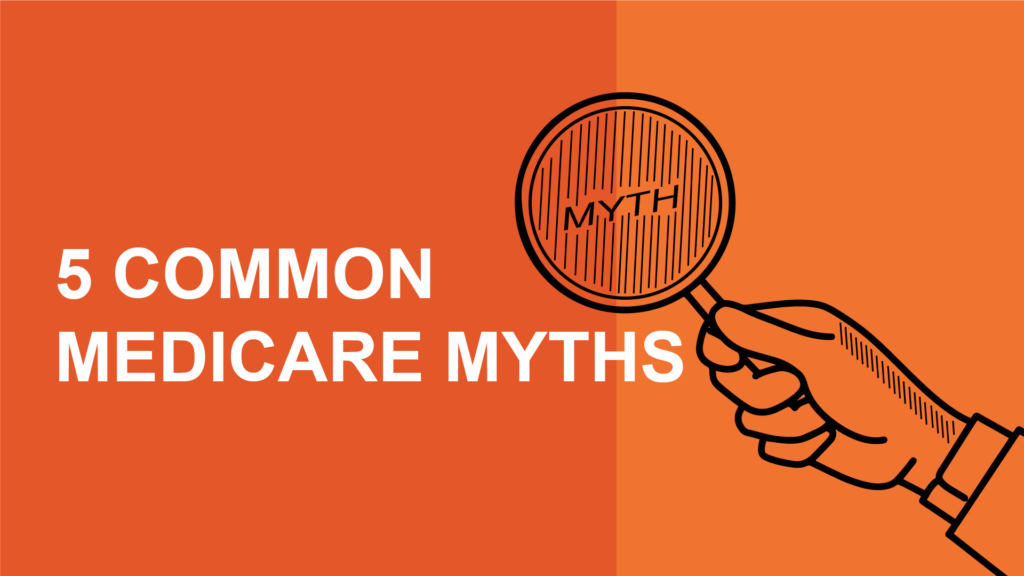Not everyone is clear on what Medicare is and what it does, so here we tackle 5 common Medicare myths.
Everyone Pays the Same
Costs for Medicare can be wildly different, starting with monthly premiums. Most Medicare beneficiaries pay $0 in premiums for Part A, but some pay $278 or even $506! Other premiums for Part B and Part D can change based on how much money you make, as reported in your tax returns. And if you don’t plan ahead and sign up for your Medicare coverage on time, you can pay hundreds more each year in penalties that last as long as you hold coverage.
Once you get past premiums, costs will vary from person to person as their health needs differ.
Medicare Is Free
A lot of people think that Medicare is free because they know that Part A premiums are usually $0. Part A is inpatient insurance for hospital and skilled nursing facility stays, home health care, and hospice. For most other things you would think of, including doctor visits, flu shots and outpatient procedures, your coverage comes from Part B. Everyone pays premiums for Medicare Part B, which is a base of $164.90 each month in 2023.
Even within Part A, however, you still have to pay a $1,600 deductible per benefit period, and Part B has a deductible of $226 before Medicare starts to pay for your health care. Copayments and coinsurance mean that you typically pay 20% of the Medicare-approved amount for covered services, which is helpful but still adds up.
There’s No Set Time to Sign Up
Remember how we mentioned those penalties? If you don’t enroll in Medicare when you become eligible, you could pay the price for many years to come. The time to enroll depends on how you qualify for Medicare.
About 15% of Medicare beneficiaries qualify due to a disability or chronic condition. Once you have received disability benefits from Social Security for at least 24 months, you will automatically be enrolled in Medicare and will receive your Medicare card in the mail. You still have to sign up for the rest of your coverage, such as Part C or Part D.
The majority of beneficiaries become eligible for Medicare when they turn 65. You have seven months around your 65th birthday (three months before the birthday month through the three months following) to enroll in Medicare and select any Part D or Medicare Advantage plan you’ve chosen.
Medicare = Medicaid
They have similar names, but Medicare and Medicaid are different government programs. Medicaid differs by state and caters to people with limited income and resources. Medicare limits eligibility to people who are 65 or older or have a disability. You can be dual eligible for these programs and even sign up for a Medicare Advantage Special Needs Plan that is designed for your needs.
Medicare Covers All Your Needs
This is the hope, but not the reality. You will find that Medicare has significant gaps in coverage, which include routine dental, vision and hearing care, long term care, prescription drugs, and more. Many beneficiaries seek Medicare Advantage plans with some of these additional benefits or separate plans to supplement their coverage.


